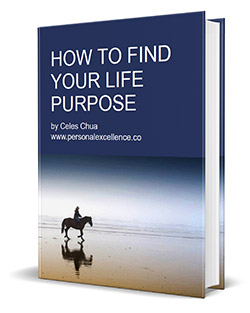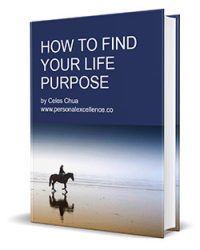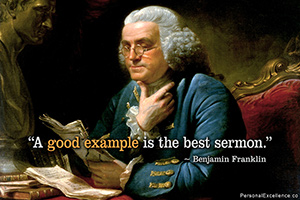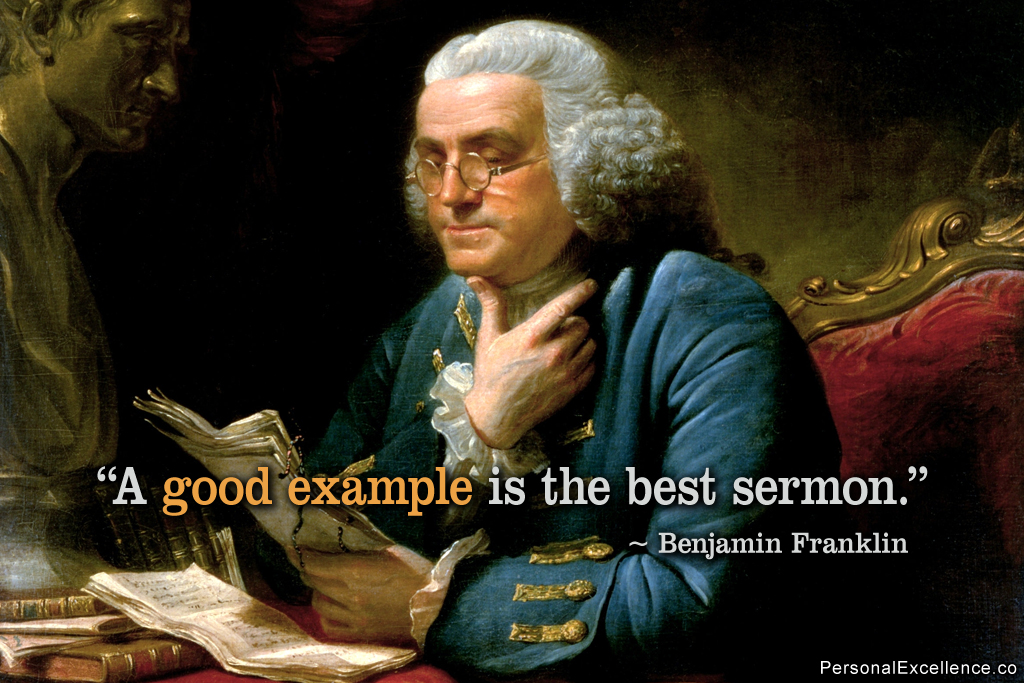
This is part 6 of a 7-part series on how to find your life purpose.
- Part 1: How To Find Your Life Purpose: Introduction
- Part 2: 5 Reasons You Should Have a Life Purpose
- Part 3: Why Earning Money Is Not Your Real Purpose (And How To Know What Is)
- Part 4: Two Important Things that Led Me to Discover My Life Purpose
- Part 5: 6 Things To Consider Before Discovering Your Purpose
- Part 6: How To Discover Your Real Life Purpose in 30 Minutes
- Part 7: Living in Alignment with Your Purpose

(Image: Pat Dalton)
“Let yourself be silently drawn by the stronger pull of what you really love.” — Rumi
“Decide upon your major definite purpose in life and then organize all your activities around it.” — Brian Tracy
In part 3 of the series, you learned the differences between false and real purposes. In part 5, you learned my 6 guiding principles to define your purpose.
In this article, I share an exercise to discover your real life purpose. Are you ready? :) Let’s go!
Set aside at least 30 minutes before you start. You should have no distractions during this time. If you feel that you are too busy to spare even 30 minutes, consider that 30 minutes is a tiny investment for something that will transform your life. It is from consciously taking the time to think about my life purpose that I live with such clarity today. If you have time to surf/chat/watch TV/do random activities, you have time for this. Cut out the time from other stuff and do this exercise.
Exercise: Discover Your Life Purpose
This exercise to discover your purpose is really simple and can be summarized in 4 easy steps.
- Equip yourself with a pen/paper or word processor. Do this when you are by yourself.
- Answer the question: “What is my life purpose?”
- Write all thoughts that pop in. All the thoughts, including miscellaneous ones. For every thought that pops in, continue to ask the same question.
- Keep doing this until you reach the answer that makes you cry.
This is the same exercise that I used to discover my life purpose in 2006. Many of my 1-1 clients and readers have discovered their life purpose from doing the same.
Some readers face difficulty when doing this. Here is a partial extract from Day 16 of Live a Better Life in 30 Days:
- Write whatever comes to mind. Even if you get answers like “I just want to do nothing,” “I want to watch TV,” or “I want to sleep,” write them down and keep going. If you have any doubts, write them down and keep going too. Whatever you write here doesn’t matter at all. It is the final answer you’re looking for.
- Get past social conditioning. Having been living in the physical world for a while, our initial answers will be related to the physical world, like earn money, get a car, be rich, get your dream job, lose weight, look good, be loved (by someone), etc. Just keep writing. New answers will start to appear after you dig deep enough.
- Vary if necessary. You can vary your question as you go along, such as “What is my life mission?” or “What is my ultimate purpose in life?” or “Why am I here?” If you get answers that get you thinking, probe deeper. Follow up with, “Why did I say that? What does this mean?” Then, return to the root question, “What is my life purpose?”
- Get to the root message. You can write about things that you like to do, be it writing or drawing or cooking. Get to the root message of these activities. Why do you like [X] so much? Is it because it lets you grow and become a better you? Is it because it lets you utilize your creativity? Is it because you get to connect with people through it? What is it? Focus on the message, not the medium.
- Keep going until you reach the point of resonance. As you write, you will get answers that resonate more than others. Focus on these answers and see where they lead to. Sometimes they may lead to nothing, in which case you restart by asking “What is my life purpose?” Keep doing this until you get to the answer that resonates with the depth of your soul. It can take as short as 30 minutes or as long as an hour. Time is not the key here.
- Do this in multiple sittings if need be. If you feel tired midway and you can’t continue, take a break and do it later. Don’t be frustrated if you are not getting anywhere. It’s normal to take a while. Keep doing this and you’ll eventually find the answer. It’s there inside you, waiting to be uncovered.
Some of my clients ask: “How do I know when I get the answer?” When you get to the answer, you’ll know. You’ll feel a strong burst of energy that overwhelms you. Many of my course participants burst out crying. Some have tears streaming down their face. Some are so happy that they cry, laugh, and grin all at the same time. It’s that powerful.
If you don’t know whether it’s the answer or not, it’s probably not the deepest answer you can get. Dig further. Separately, do it at separate sittings, without attaching yourself to the answer you just uncovered. If it’s truly the answer, it’ll come up again.
My Experience
When I did this exercise in 2006, my first set of answers were social-conditioning junk, like to earn money, to become slim and pretty, to become successful, to become married, etc. They started to disappear as I progressed through the exercise.
The first signs of my purpose started popping in at answer #20, though a truckload of conditioned purposes appeared after that. That’s an important thing about this purpose exercise — sometimes you may get a new answer, only to revert to a bunch of previous answers. That’s normal. Just keep going, without bias or resistance.
I finally arrived at an answer that fully resonated with me at #80, after which I refined it. When I got to my answer, I felt such a strong wave of emotions that I started to cry. I just felt extremely touched, humbled, and grateful when I received the answer, that I’m able to pursue this purpose, and I have the opportunity to be here on Earth to do this. This feeling is very pure, without any skepticism, ego, or fear surrounding it. And then when I did the exercise again a few days later, just to verify that it’s the right answer, the same thing happened.
Some of you may find your answer at answer #200 or #500. For me, I was introspecting on my life and the meaning of life for two entire months before I did the exercise. I was also flushing out a lot of mental waste before that. These helped facilitate the exercise and get to my answer quicker.
Some Possible Outcomes
Here are some possible outcomes from this exercise:
- You get an answer that connects with your heart and soul. For some of you, you may be so overwhelmed that you cry. (I did; many readers experienced the same thing. They felt so emotional that tears just streamed down their faces.)
- Your answer gives you an “aha!” and connects on some level.
- You get an answer that’s like “Uhhh… okay. What does this mean?”
- All your answers don’t connect at all.
When you reach #1, you’ll know. If so, proceed on to the next section of this article (on mission statement).
If you get #2, continue on with the exercise. There are deeper layers to be uncovered.
If it’s #3 and #4, you have not gotten the real answer yet. Keep going, or take a break and try again later. The way the exercise works is that you’re actually talking to your inner self, to uncover your real purpose from him/her — because he/she has the answer to your life purpose. Follow the instructions above and keep probing beyond the answers you get. Your mind is like an ocean, and the answer lies at the bottom of the ocean. All these in-between answers are the water we are scooping out to get to your final purpose at the end.
Note that whether you get to #1 depends on the following:
a) Your breadth and depth of experiences up till this point
The more contexts you have been exposed, the easier it is to progress in this exercise. By context, I mean anything that’s outside of what you normally see. For example, immersive traveling and living in different countries (I’m not talking about touch-and-go traveling or vacation visits) exposes you to different ways of life. Pursuing goals in different areas puts you in new situations. Working in different career fields exposes you to new schools of thought.
As I have shared in my story on how I found my purpose, it was from actively pursuing my personal growth and exposing myself to different contexts that helped me realize what I truly want to do in life.
If you cannot generate a meaningful answer from looking within, try looking outward to the world. What have you not explored or seen? Go wild and open yourself to all kinds of things possible.
The more situations you expose yourself to, the more likely you are to find what sets you off on the inside. This is the same as the concept of heuristics, which is the process of continuously searching to find the optimal solution to a problem. In a matter of time, the process of trial and error will lead you to your real purpose which resonates with you.
b) Your consciousness level
The level of your consciousness is a result of your self-awareness. This is extremely important because it sets the stage for your purpose. If you have a limited understanding of reality, you will have a limited purpose.
By properly understanding the universe you live in, you can identify your purpose more accurately and build it on an unshakable foundation. It’s like getting a bird’s eye view of a maze as you define the best path to move forward.
Here are some ways to increase your consciousness:
- Adopt a worldview, rather than focusing on a particular time and space.
- Constantly challenge social constructs and beliefs.
- Work on understanding the root cause rather than dealing with effects.
- Meditation and brain dumping help too.
At the end of the day, there is no right or wrong answer. There is only the answer that is truest for you. To date, I have never had a client with the same purpose statement as another. Some of their purposes are: “To love myself and others unconditionally,” “To live my best life via being persistent and taking continuous actions on my goals,” “To do the right things right,” and “To be my best and touch others’ hearts.” All of you are unique individuals and thus your purpose will be totally unique to you. It is what matters to you.
These articles will help:
- How To Know What You Want To Do In Life
- How To Know If Your Life Purpose is For Life (And Not Short/Medium Term)
Create Your Mission Statement
Now that you have discovered your life purpose, now it’s about framing it into a mission statement. A mission statement is a statement that states your life objective. It’s meant to be concise and to the point, so it’s usually just a few lines long. You may have heard about companies having mission statements, and it’s the same thing here, just applied to your life.
I have some pointers for you:
- Keep it to 1-2 lines. Your statement should (a) precisely convey what you want to do in this world, (b) resonate with you, and (c) be easy enough to remember. If you have several lines, pick out the key essence and trim it into 1-2 lines. The reason is that if you have a 6-7 line statement, it’ll be very difficult for you to remember, much less live by it. With a 1-2 liner, it forces you to prioritize and pick out the essence of your purpose, and hence makes it easier to live by it.
- Action form. Frame your purpose as an action, such as “To live to my highest potential” or “To bring love and joy to everyone in the world.” Your purpose statement is meant to put you into action mode vs. it being a passive statement like “Love, Truth, and Courage” or “Happiness and Joy.” These are descriptors vs. something you act on.
- Charge you up. What do you feel when you see your statement? Do you feel excited? Or do you feel nothing? Your mission statement should make you come alive when you see it, which means that each word should resonate with you. If not, tweak it until you do. If necessary, revisit the exercise and consult your higher self again.
- Direction, not destination. Your purpose statement should reflect an ongoing journey, not an endpoint. For example, “To live to my highest potential and be the best I can be” means to constantly grow and become better. There is no single endpoint for growth because human potential is unlimited and there is always room to be better.
My Life Purpose
After doing the writing exercise with my subconsciousness and consciously evaluating my purpose, I arrived at my purpose below (as mentioned in part 4). My purpose is two-fold:
To raise the world’s consciousness and unite the world as one.
To achieve my highest potential and live my best life.
Please do share with me your experience and the output you get from this exercise — I would love to read about it!
After Defining Your Purpose
The most important thing to note is that even after defining your mission statement, it will change in the future. Just as you evolve as a person throughout life, your perceptions of life’s meaning will change too.
Be sure to review your purpose statement periodically (every 3 months at first, followed by 6 months, then yearly) to ensure that it resonates with who you are. It is possible that you have experienced changes or obtained new revelations in your worldview that make your purpose irrelevant to you. This is just like how companies regularly review their company mission statement to ensure that it is not obsolete.
Now that you have discovered your new found purpose in life, it’s time to integrate it into your life. In the last part of this series, I will share how to reconcile your current path with your new purpose. Read Part 7: Living in Alignment with Your Purpose
This is part 6 of a 7-part series on how to find your life purpose.
- Part 1: How To Find Your Life Purpose: Introduction
- Part 2: 5 Reasons You Should Have a Life Purpose
- Part 3: Why Earning Money Is Not Your Real Purpose (And How To Know What Is)
- Part 4: Two Important Things that Led Me to Discover My Life Purpose
- Part 5: 6 Things To Consider Before Discovering Your Purpose
- Part 6: How To Discover Your Real Life Purpose in 30 Minutes
- Part 7: Living in Alignment with Your Purpose










 Thanks for reading. If you like my free articles, join my private email list and get my latest updates and articles sent right to your inbox.
Thanks for reading. If you like my free articles, join my private email list and get my latest updates and articles sent right to your inbox.